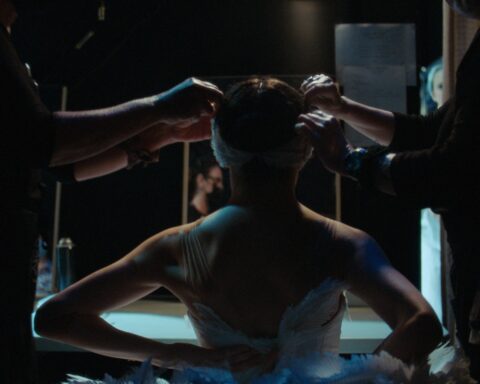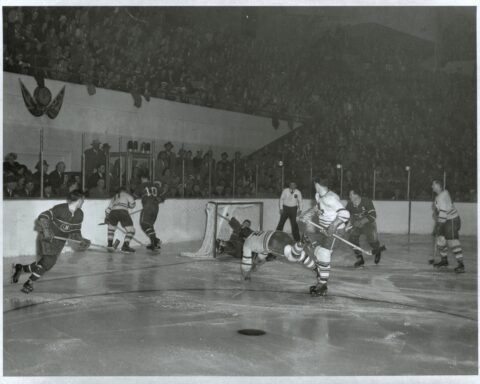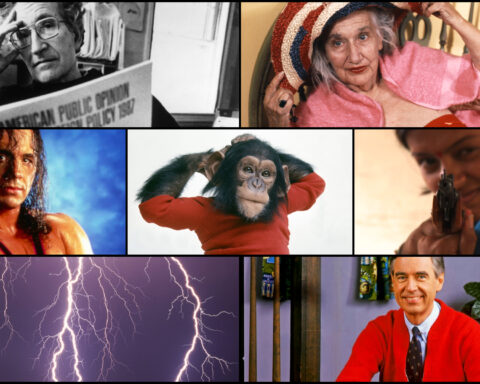In last issue’s Pointed View, filmmaker and teacher Oliver Hockenhull attacked “the aesthetic of suffering of others and even of oneself, the perversity of screen distance and the lovely framing of trash and indus- trialism.” He found those tendencies to be manifested in a number of documentaries, but most notably in Manufactured Landscapes, a film that depicts photographer Ed Burtynsky’s art and political practice mainly through a journey that he took to China, which resulted in a traveling exhibition and book. In particular, Hockenhull derided a photograph Burtynsky took of Chinese children standing in a garbage pile. He wrote, “it is not compassion nor intellectual engagement, but sadism and masochism that draw the audience to these new ‘works.’” In the interest of fair play and debate, POV has asked the director of Manufactured Landscapes, Jennifer Baichwal, and the film’s producer Nick de Pencier to reply. Here is Ms. Baichwal’s Pointed View.
– Marc Glassman, editor, POV
First let me express some dismay that Mr. Hockenhull watched our film on the back of an aeroplane seat. We did spend considerable time trying to translate the scale of Burtynsky’s photographs, as well as the industrial landscapes they frame, into the medium of film. I would never argue that a cinematic experience is crucial to understanding a piece of work, but in this case, it helps.
The political questions Hockenhull raises are not new. There is, of course, underlying all documentary work, the looming problem of representation — the unholy trinity of subject, viewer and (in this case) photographer, and we all know who is on the bottom of that triangle. The last film we made, The True Meaning of Pictures, dealt almost exclusively with issues of representation, using the arena of Shelby Lee Adams’ work to examine, from as many angles as possible, what ‘fair’ means and if it is ever possible in the documentary context.
We could have made the same film again, focusing on what surrounds the work, rather than the work itself, as indeed could every film that deals with photography and photographers (and by extension, filmmakers representing photographers and their photographs). What I find about Burtynsky’s work, however, is that its strength lies precisely in its ambiguity, which is the point de Pencier was making when he stated that it hangs on the walls of corporations and in the offices of those who fight against them. Its very lack of explicit ideological content is what makes it powerful, because viewers are lulled into an aesthetic experience before fully realizing that what they are looking at is garbage, and that the garbage they are looking at is their own.
The charge that photography can aestheticize suffering is a difficult one, because sometimes it can and does. I find the human-centred work of photographers like Salgado, for example, problematic. But the question of intention is crucial. The photograph Burtynsky was taking in the “unforgivable” incident Hockenhull mentions was a Polaroid, which the children in the scene had asked him to take and give to them. They were posing for themselves. The photograph he published of that site, a sea of discarded rotary phone dials imported to China from Western countries, has no people in it. In fact, most of his photographs are free of people, unless the point is being made that they are an integral part of the massive industrial cycle that is his subject.
The arena of inquiry in artistic practice is almost always more open, lateral and emotionally accessible than didactic argument; it can move people more formidably. That is one of the reasons our films tend to focus on the work of artists, because of art’s capacity to shift consciousness in an unexpected way. This rarely occurs through polarizing political argument. From my experience, such tirades are more often offered to reify the position of the ones arguing than to persuade others of the wisdom of their perspective. Unfortunately, many existing environmental discourses have failed to convince people by doing exactly that.
The place Burtynsky inhabits by not wearing his politics on his sleeve is perhaps a thornier one than work or arguments which provoke only one of two responses: assent or dissent. The ambiguity in his photographs admits both self-implication and complexity. As we drive our cars and fly around in aeroplanes, or buy and discard trinkets made thousands of miles away, this is some thing all middle class Westerners should be able to apprehend, and spend some time thinking about. It isn’t, taking Arendt’s point, that difficult to discover culprits in this context.











